Recreation & Tourism
Our History
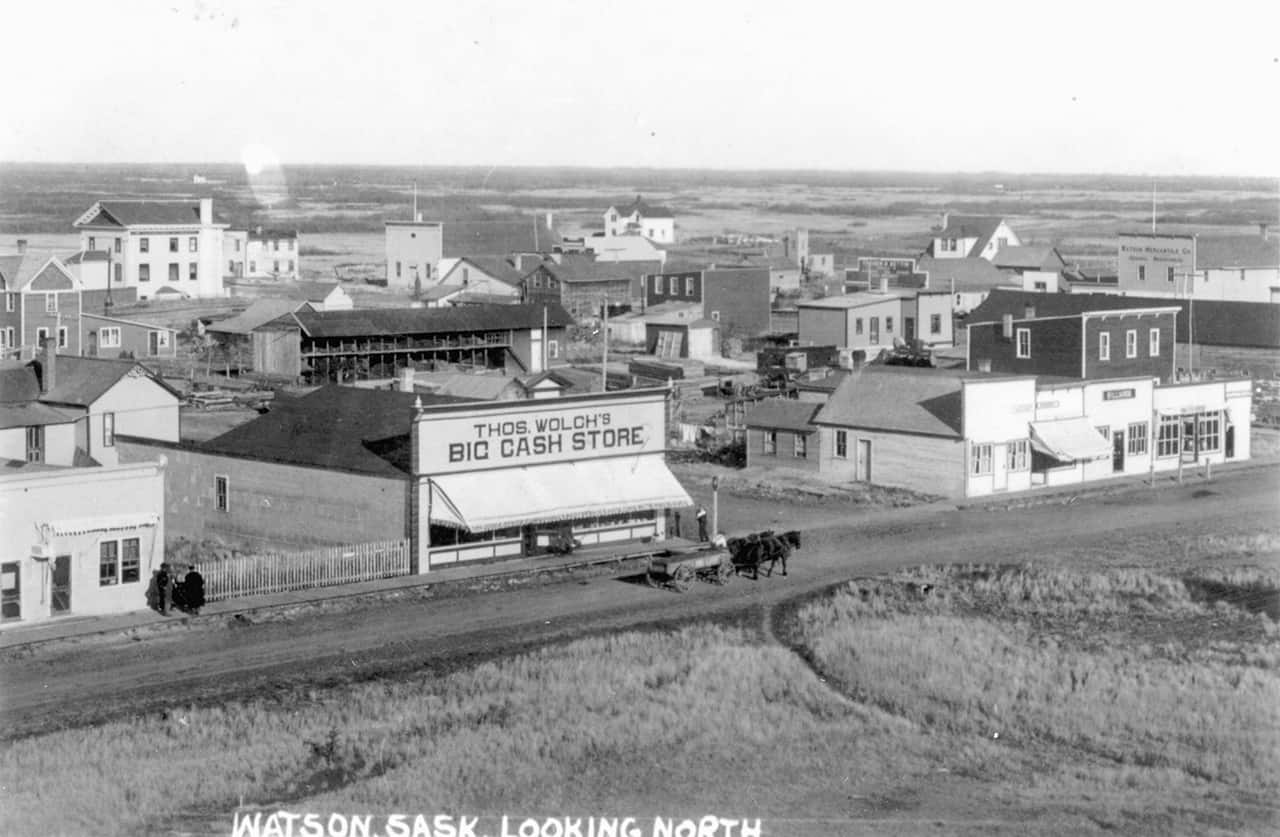
Watson in 1912
Our History (Pre-1900s)
The Quill Plains region was known to fur traders and aboriginal people long before settlement by Europeans, “In 1795 fur traders operated from posts on the Upper Assiniboine River, at least as far west as Touchwood Hills and Quill Lakes and possibly beyond them. Accordingly when the central section of the trail from Fort Pelly reached as far west as the north shores of Quill Lakes, it traversed country, which was not entirely unknown. Thus in 1824 the trail from Fort Garry was along the Assiniboine to Fort Pelly and thence west to the vicinity of Quill Lakes. The country between Quill Lakes and Carlton House was virtually unknown to the white man and inhabited by the Crees and the Saulteaux and their hereditary enemies, the Blackfoot Indians, and through which there was no definite route nor water course for guidance. Notwithstanding, Governor Simpson of the Hudson’s Bay Company in 1825, when returning from a trip west, from Carlton House to Fort Garry, made a cross-country trip through this territory, which determined the course of the trail for the next twenty-seven years. In 1850 the Qu’Appelle Lakes Post was erected and in 1852 Touchwood Hills Post started operation. This changed the course of the trail from north of Quill Lakes, to south of Touchwood Hills, although the former was still used by virtue of being a shorter route.” [Manitoba Historical Society, MHS Transactions, Series 3, Number 28, 1971-72 season]
Our History (Post 1900s)
Watson is a town of roughly 777 residents in the rural municipality of Lakeside, in the Canadian province of Saskatchewan. Watson is located on the intersection of Highway 5 and Highway 6, the Canam Highway. It is approximately the same distance from Saskatoon which is to the west, and Regina to the south, which gives rise to its town motto, Industrial Crossroads of Saskatchewan.
Settlers began arriving in the early 1900s. These settlers were attracted to the Quill Plains by the soil, abundance of grass, and lush flora. There was plenty of timber close at hand that could be used for fuel and construction of temporary buildings. Those who came first selected their homestead location based on where they thought the CN Railway might be built. The early settlers speak about buffalo trails running through the area. Those early settlers who broke sod in the area had the experience of plowing under the bones of these noble beasts. The first settlement in the area was referred to as Iron Springs Creek, the creek is still present today and runs into Big Quill Lake, about fourteen miles from present day Watson.
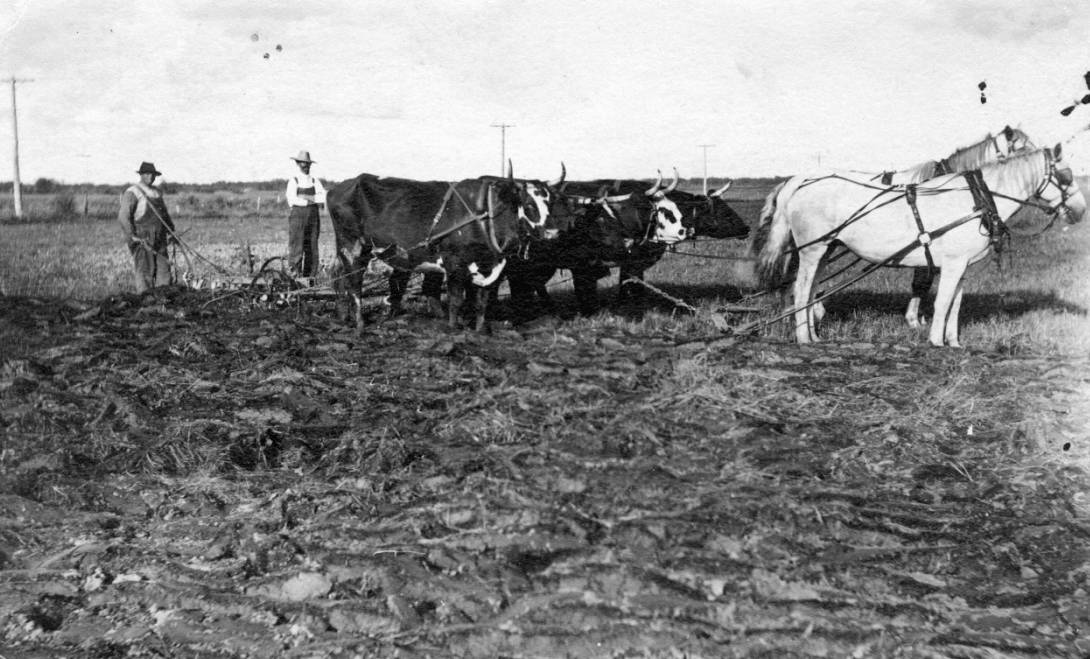
Plowing in the early years with oxen and horse, a common sight.
The first two recorded European settlers date back to 1900, they are two American hunters and trappers, George W. Elliot and John O. Howe. They did fairly well hunting and trapping, and decided to settle in the area. Howe selected a homestead on the present site of Watson and Elliot settled further north in what is now the Spalding area.
In 1902 the CN Railway was surveyed across the Quill Plains and the rate of settlement picked up considerably. At least 26 families came ahead of the railway, most of them coming by rail to Sheho, SK, not far from Yorkton, SK. They then travelled across country, a trip that took eight days if there were no problems. In 1904 the railway arrived and Watson was established but not surveyed. It was named after Senator Robert Watson, from whom the land was purchased.
1904 was a big year for Watson. J.H. Wilkes and family moved to Watson making Mrs. Wilkes the first woman to live in Watson. They built a house and restaurant from the first car of lumber that arrived. Joe Hufnagel built the first store in Watson. On April 1, a post office was opened on the homestead of Frank J. Vossen Sr. four miles north of town. The post office moved into town in October and was located in the back of Hufnagel’s store. Frank J. Vossen was postmaster for the next fifteen years. A territorial election for British Citizens was held that year and Hufnagel’s store acted as the polling station.
In 1906 Watson was officially incorporated, with a population of 129. The Western Canada Elevator was built as the first grain elevator in Watson, the Canadian Bank of Commerce opened a branch in the Victoria hotel and school classes were held in the Presbyterian Church.
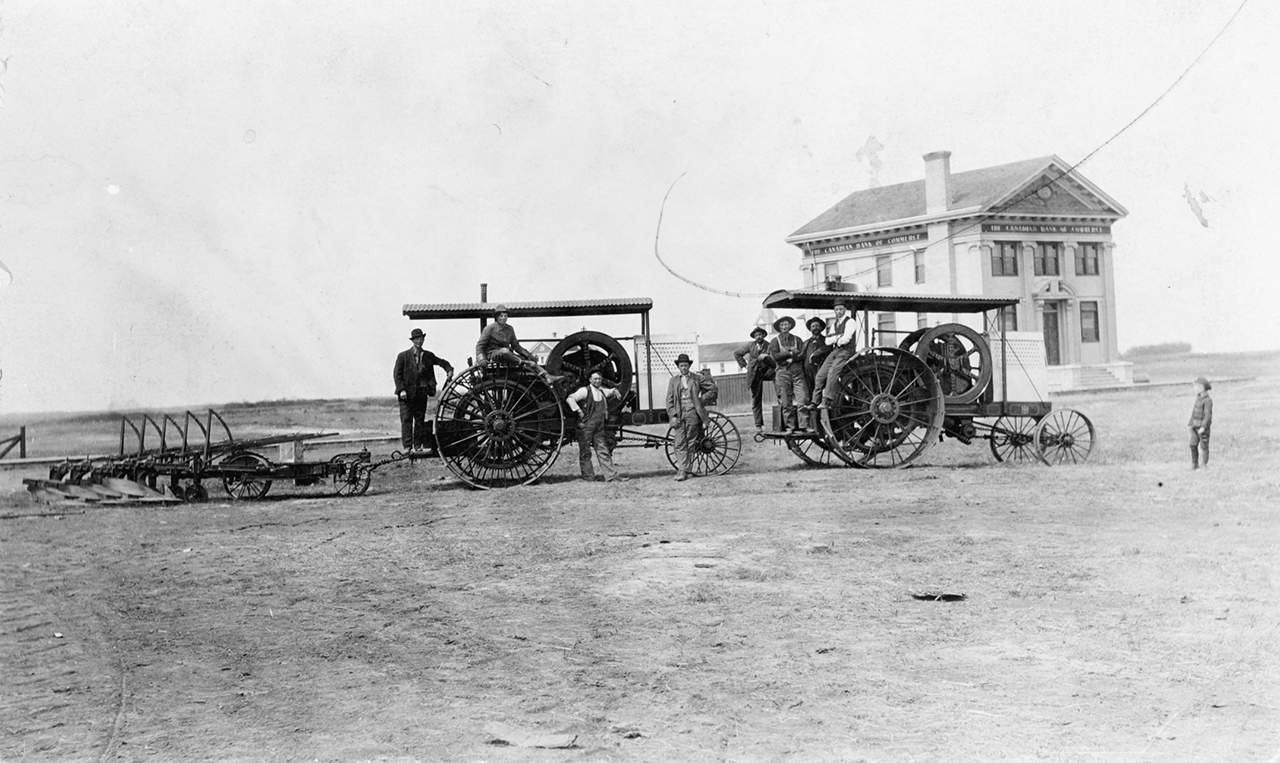
Early days of Watson, new Canadian Bank of Commerce in the background (built in 1907).
From here on Watson saw a period of great growth and expansion thanks to the coming of the CN Railway and all the supplies and people that it was able to provide.
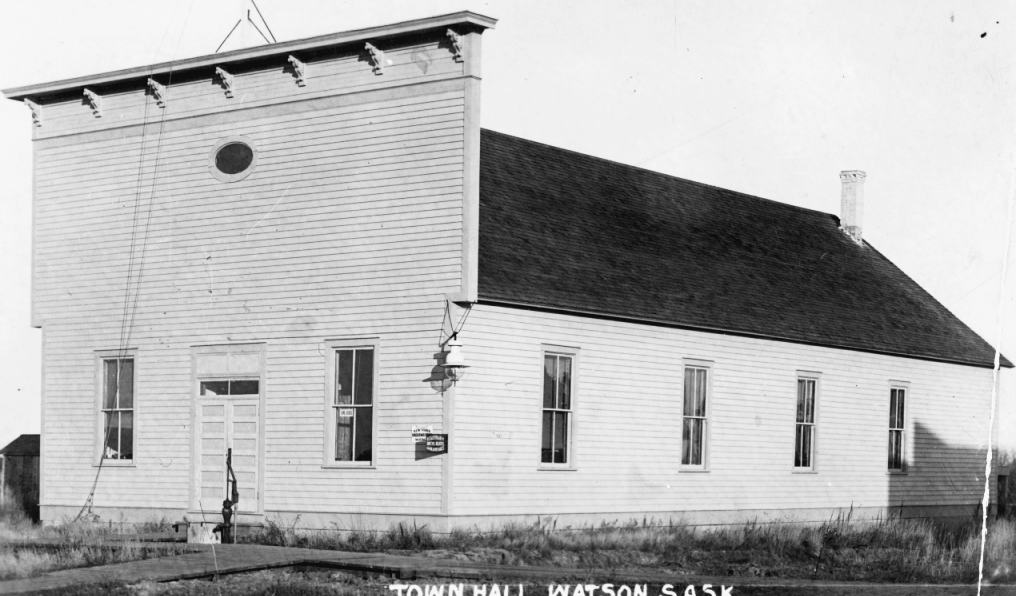
Watson Town Hall built in 1912 for a cost of $2000
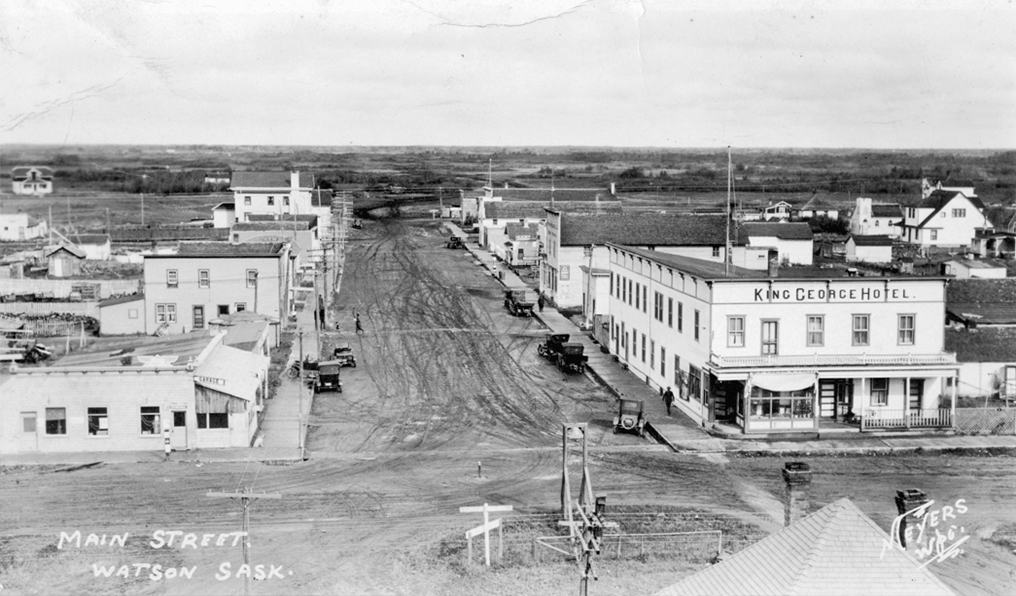
Watson in 1920's
Notable Watsonians
- Dustin Tokarski – NHL Goaltender
- Ross Lonsberry – NHL Player
- Max McNab – NHL Player, Coach, GM
- Rod Gantefoer – Legislative Assembly of Saskatchewan MLA, Finance
- Do you know a notable Watsonian? Let us know!

